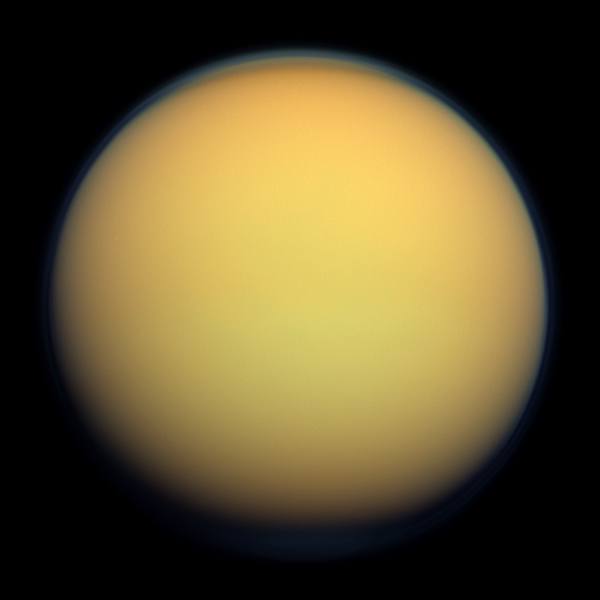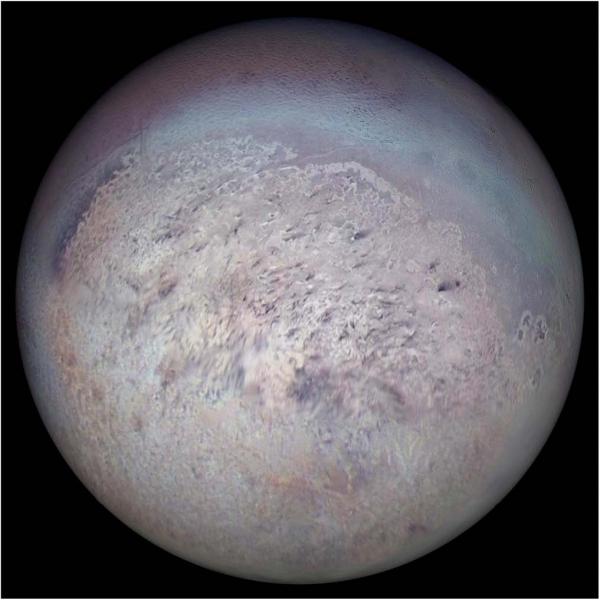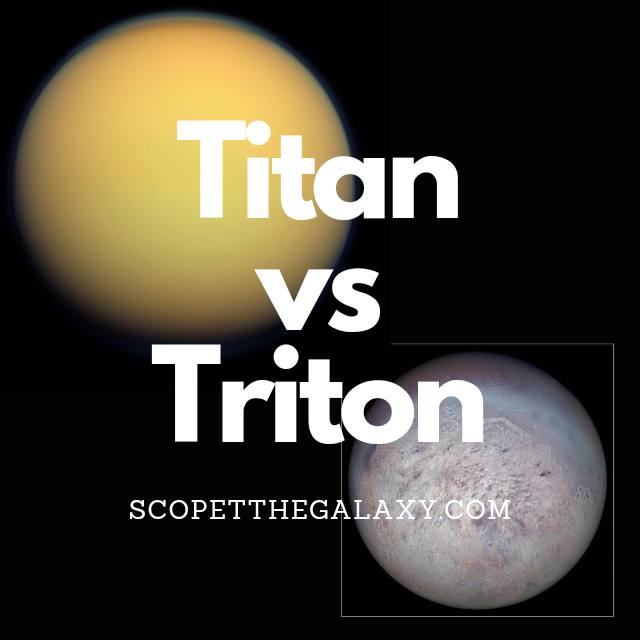*This post may contain affiliate links. This means we may make a commission if you purchase an item using one of our links*
The main differences between Titan and Triton is that Titan is the 2nd largest moon with a diameter of 5,150km whilst Triton is the 7th largest moon with a diameter of 2,706km, Titan orbits Saturn whilst Triton orbits Neptune, Triton’s orbit is in a retrograde motion (opposite direction) whilst Titan has a normal orbital motion and Titan has a water cycle similar to Earth whilst Triton doesn’t.
There are various other differences between the two so, continue reading for a more detailed look at each of these celestial bodies along with their similarities and differences.
What Is The Moon Titan?
Table of Contents

Titan is Saturn’s largest moon and the second biggest moon in the entire solar system, with a diameter of 5,150km. This would make it even larger than the planet Mercury which is only 4,879km, and significantly larger than Pluto also.
As a result, Titan’s gravitational strength stands at around 1.352 m/s²
It is the only natural satellite in our solar system that is composed similarly to Earth, where it has a thick atmosphere (1.19 times that of Earth) made primarily of nitrogen (95%) along with smaller amounts of methane (5%).
It has rivers and lakes on its surface along with a water cycle very similar to that of Earth, where essentially water evaporates and eventually lands on the satellites surface.
Therefore, much like Earth, Titan has a terrestrial based body but, there is a difference in their atmospheric pressure. The pressure on Titan’s surface is around 60% greater than that of Earth’s surface but, it isn’t nearly as dense.
Nevertheless, it is still far denser than most other bodies at 1.88 g/cm³. As a result, Titan’s mass is 1.345×10^23 kg.
In regards to its temperature, Titan is on the colder side where it averages around -179 degrees Celsius whilst its core’s temperature is actualluy very cold in comparison to other entities falling between 226 – 526 degrees Celsius.
As Saturn is the 6th farthest planet from the Sun, it will take Titan roughly the same amount of time to orbit the Sun, which would fall around 29.4 years.
It takes Titan 15 days and 22 hours to orbit Saturn. A day is 15 days and 22 hours also as it is tidally locked to the gas giant.
What Is The Moon Triton?

Triton is the largest moon of Neptune, whose most unusual feature is its retrograde orbit. Triton is the only major moon in our solar system which orbits in the opposite direction of its planet’s rotation.
First discovered on 10th October 1846 (just 17 days after the discovery of its planet, Neptune) by British astronomer William Lassell, “Triton” comes from a merman in Greek myth; a name which perhaps stems from the composition of this faraway moon.
The diameter of Triton is approximately 2,706km, making it a similar size to Earth’s moon. However, we know that its mass is far less than the first estimates suggested because data from Voyager showed that the surface is icy and highly reflective, a less dense composition than the dark surface of our moon.
This icy surface has resulted in ice based natural satellite displaying temperatures in the region of – 235 degrees Celsius.
This lower density stems predominantly from the water-ice interior encasing a denser rock core. Still, the mean density of 2.06 grams per cubic cm remains higher than that of any of Saturn’s or Uranus’ moons. In addition, Triton holds more than 99.5% of the mass of everything that orbits the planet Neptune and its total mass is greater than every smaller satellite in the solar system combined.
Scientists think that Triton may be an object from the Kuiper Belt that Neptune’s gravity captured millions of years ago. This is because it shares many similarities with the dwarf planet Pluto – the best-known world within the Kuiper Belt.
This frozen world is a land of geological oddities with craters and a collection of depressions and ridges known as cantaloupe terrain. The geysers found on this moon shoot plumes of nitrogen as high as 8km high, which creates a thin atmosphere of nitrogen.
In around 3.5 billion years, Triton’s orbit will travel too close to Neptune, and the planet’s gravitational pull will break the moon apart, creating a ring system.
Similarities Between Titan And Triton
As both are natural satellites, Triton and Titan do share a few similarities, which includes the following:
- Both have a hotter central core.
- Both have a rocky, terrestrial surface.
- Both are spherical in shape.
- Neither have rings surrounding them.
- Both are tidally locked to their planet.
- Both orbit their planet in an elliptical pattern.
- Neither have a magnetic field.
- Neither have tectonic plates.
Differences Between Titan And Triton
In regards to the differences between the two, they include the below:
- Titan is the bigger of the two with a diameter of 5,150km whilst Triton has a diameter of 2,706km.
- Triton orbits Neptune whilst Titan orbits Saturn.
- Triton has a very thin exosphere composed mostly of nitrogen with small amounts of methane whilst Titan’s atmosphere is 1.19 times as thick as Earth’s and is composed of nitrogen and smaller amounts of methane also.
- Titan has a water cycle similar to that of Earth whilst Triton does not have a water cycle.
- A day on Triton takes 5.877 days whilst a Titan day is 15 days and 22 hours.
- It takes Triton 5.877 days to orbit Neptune whilst Titan orbits Saturn in 15 days and 22 hours.
- Titan orbits Saturn at an average distance of 1.2 million km whilst Triton is 354,800 km from Neptune.
- Titan’s axial tilt is 27 degrees whilst Triton’s axial tilt is close to 0.
- Triton’s average temperature is around -235 degrees Celsius whilst Titan’s average temperature is -179 degrees Celsius.
- Titan’s density is 1.88 g/cm³ whilst Triton’s density is 2.06 g/cm³.
- Titan’s mass is 1.345 × 10^23 kg whilst Triton’s mass is 2.14 × 10^22 kg.
- Triton’s gravitational strength is 0.779 m/s² whilst Titan’s is 1.352 m/s².
- Trition is the only moon in our solar system that orbits its planet in a retrograde orbit.
Summary
As both Titan and Triton are both natural satellites, they both share a few common features such as the fact they orbit a gas giant, have no other objects orbiting them and a generally similar rock based surface there still are differences present also.
Whether it be in regards to their mass, size, density, the fact Triton has retrograde motion whilst Titan doesn’t, Titan has a water cycle and a thick atmosphere and beyond, so it only makes sense that both have very different functionalities from one another despite sharing the feature of being natural satellites.

